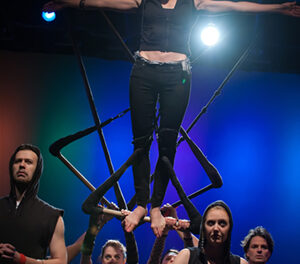So much music to discover; so little time…. Readers may already have guessed that this reviewer seeks out performances of repertoire that is off the beaten path and is far more interested in hearing something new to his ears than in attending the umpteenth performance of a war-horse or hearing the “definitive” performance of a standard classic. Luckily, the Triangle abounds in opportunities for him to indulge his wishes.
Some 250-300 people joined me in Meymandi Concert Hall on January 11 to discover some music by mostly American composers (plus one Spaniard) that evoked Mexican sites and sounds. The performance was given by the North Carolina Wind Orchestra.
The program opened with the rousing eight-minute Symphonic Dance No. 3 (“Fiesta”) – there are five in all – by Clifton Williams for full-size wind band. It was commissioned in 1964 by the San Antonio Symphony Orchestra for its 25th anniversary. It reminded this listener of some of the sounds of Tijuana Brass and mariachi bands popular in the late ’60s and early ’70s in its celebratory atmosphere leading up to a bullfight.
Next came the evening’s first substantial, and certainly most complex number, “Winds of Nagual” by Michael Colgrass. This is a six-part tone poem telling a story in the manner of Kodaly’s Hary Janos or Prokofiev’s “Peter and the Wolf.” Each of the two principal characters has his theme, like each of the animals in “Peter,” and the structure is episodic, as in Hary. The story comes, however, neither from a folk legend nor a fairy tale but from the purportedly autobiographical writings of Carlos Castaneda. What was to be his one-semester anthropological study of the Mexican sorcerer Don Juan Matis turned into a fourteen-year apprenticeship in pre-Columbian occult techniques. There were some amazing occurrences, including an encounter with Don Genero, a sorcerer capable of disappearing acts, along the way towards finding his “creative self” or “Nagual,” and at the end of the search “he leaps into the abyss and explodes into a thousand views of the world.” Colgrass wrote: “My real object is to capture the mood and atmosphere created by the books and to convey a feeling of the relationship that develops as a man of ancient wisdom tries to cultivate heart in an analytical young man of the technological age.”
Supplementing the written program notes, Maestro Michel Votta, Jr., prepared the audience for the piece with a detailed plot summary and description of the scenes that the composer chose to portray musically, giving indications of what the music is intended to suggest. Bird calls, water, wind, leaping around, meditating, celebrating and ultimate understanding are all evoked with appropriate instruments, a piano, harp, doublebass and contrabassoon having been added to the personnel in the successive movements. This work certainly does not hang together as well nor is it on the same level as the Kodaly. While it has some trite and derivative moments, it would bear a re-hearing, and it rises above the simple animated-cartoon aspect that the Prokofiev brings to mind. Granted, the latter is written for children and this most definitely is not. It is at times colorful, lush, evocative, fascinating, but it lacks a coherent and inherent overall structure.
After intermission, we heard the seven-minute “Adagio for Wind Orchestra” of Joaquin Rodrigo, a composer we most often associate with the guitar but who also wrote concerti for various other instruments. This work was commissioned by the American Wind Symphony in 1966. Its pleasant melodies and its orchestration are typical of his music – lyrical, atmospheric with a Spanish flavor and flair, and serene.
Then came the final substantial work, the 25-minute, three-movement “La Fiesta Mexicana” by H. Owen Reed. This was the evening’s most truly symphonic offering, progressing from a “Prelude and Aztec Dance” through a “Mass” to a “Carnival” to evoke a day-long celebration in the square and in the cathedral of a feast of the Virgin. It incorporates authentic folk tunes and themes borrowed from Gregorian chants and Aztec dances, all found by the composer during a five-month stay in Mexico on a Guggenheim Fellowship. The work is structured in the traditional symphonic form and holds together well; it had for this listener a certain Coplandesque quality, but less flashy and more substantive.
The performances of all the pieces were smooth and polished. The balance of sound and variety of volume were excellent. The musicians demonstrated good mastery of the music and seemed in good control, although there were some stray noises created by moving around between movements that the Meymandi acoustics amplified. Votta has shaped this band of mostly wind teachers into a first rate ensemble that is definitely not your usual wind band! The program notes were well written, succinct, precise and informative with material on the composer and on the work itself for each of the pieces. They did not, however, include a list of the personnel.
Come out with me to Meymandi on May 24 to discover some music composed for “Funerals, Weddings, and Other Tragedies.” You won’t be sorry you did.











